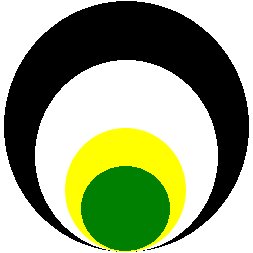
Mother Church * Church of the Mother
The Bible 1
In her excellent book "Ich verwerfe im Lande die Kriege" Gerda Weiler is analyzing the Bible saying, that it (the Bible) has to be understood as a testimony of the struggle of the young patriarchy against the old Mother religion. While the Israelites are commonly regarded as "the twelve tribes of Israel, united under the guidance of the one God Jahweh and as such the example of the oldest monotheism on earth", Gerda Weiler is proving the opposite. In a series of fascinating chapters, she is looking behind patriarchal re-interpretations and emphasizes, that the twelve tribes weren't one people and that Jahweh originally was a - one of many - matriarchal (Canaaite) vegetationgod(s). Especially the archeological findings of Ras-Shamrah - a Canaaite settlement - are proving the common matriarchal background of the mixed Israeli-Canaaite population. "The struggle of Israel against "pagan (matriarchal) cultures surrounding them" was in fact the struggle of a small minority of fanatical Levite priests against its own (Mother-oriented) people. The early Israelites proved not to have had a monotheistic religion at all! It was the Levites that created the southern version of Jahweh, the jealous wargod, who only very late (1100 BCE) succeeded in overpowering all other Gods. Through backward projection, Levite theology made Moses the receiver of the Law, which he (Moses) himself - as a matriarchal man, who kept watch over the sheep of his wife - has never known.
In ancient times the Great Mother is giving birth to one Son, symbolizing the oneness of nature. This God embodies the earth and the vegetation. Jahweh used to be such a God. As a competitor of Ba'al he promised the return of the seasons - summer and winter, draught and rain - on earth. In the Bible countless times "infertile" tribe mothers are giving birth to a choosen son, symbolizing the ancient cult of the Mother's Son/God, who's function it is to die and to become reborn, thus guaranteeing the cycle of fertility. He is the hero, who is voluntary descending into the underworld - the Lap of the Mother - to become reborn, in order for his people to survive. It is a theme, which can be found through the entire Middle-East, from Sumer to Egypt and from Canaan (Anat and Ba'al) via Dionysos to Jesus Christ. The Bible is full of places, where the emerging patriarchy tries to replace the myth of the mortal vegetation God by the eternal Jahweh. (Later Paul would do the same "trick" with Jesus). Sometimes a surprising open account of the old cult can be traced though. One is the Book of Hiob, the other is the famous Song of Songs.
Going deeper into:
Read:
* G.Weiler "Ich verwerfe im
Lande die Kriege", 1986
Frauenoffensive (In German).
* The Book of Hiob
See a (your) Bible.